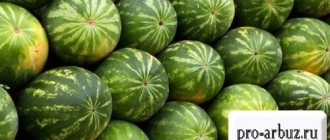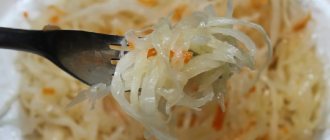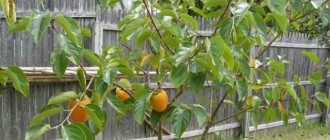Is it possible to grow watermelons in the Urals?
It is quite possible to grow watermelons not only in the southern latitudes of our country, but also in the Urals. The main thing is to take into account the peculiarities of planting crops in a given area and follow them in practice. It is important to understand that it is not possible to obtain large watermelons weighing 10 kg or more in the Urals, since they simply do not have time to ripen in a short period of summer. The maximum they will be capable of is the formation of thick and strong lashes with flower stalks. When temperature indicators begin to decline, melon plantations will stop their growth and development and begin to slowly die.
For the Urals, it is better to choose early-ripening watermelons with excellent cold resistance and the ability to produce crops not only early, but also in large quantities. An early ripening variety can be determined by the ripening period indicated on the packaging by the manufacturer - this is 75–80 days from the date of planting. Whereas the ripening period for mid-ripening watermelons is 85–90 days, and for late-ripening ones it is 95 days or more.
For cultivation in the temperate climate of Russia and Siberia, varieties characterized by an accelerated fruiting period and small fruit size are suitable: Ogonyok, Gift to the North, Sugar Baby and others. With this choice, there is a possibility that the crop will be able to fully ripen during the short warm summer.
To grow watermelons in the Urals, you need to choose early-ripening varieties with small fruits
Growing in a barrel
Growing watermelons in a barrel
- This method is considered the easiest to obtain fruits at home. It is used not only in the Urals and Transbaikalia, but also in other regions (Western Siberia, the Republic of Udmurtia, Tatarstan). Watermelons in a barrel are the most protected from diseases and pests; growing them usually does not cause any particular difficulties.
- Melons in barrels are also obtained in the same way; the step-by-step cultivation looks like this:
- A two-hundred-liter metal barrel is placed near fruit trees, but so that they do not shade the container.
- The barrel is filled to the very top with weeds, and when they settle, soil from the garden and humus are added.
- Small depressions are made in the soil mixture and the seeds are placed there, after which they are covered with a film and covered with a barrel.
- When the seeds begin to grow, the film is removed and the crops are thinned out, leaving only the two most fully formed seedlings at a considerable distance from each other.
Further care is identical to caring for plants in a greenhouse, except for tying, which is not required when cultivating in a barrel.
Regardless of the cultivation method, the gardener is required to make every effort to form a high-quality harvest. At the end of the growing season, your efforts will be richly rewarded.
How to grow watermelons in the Urals
Watermelon is considered an annual plant that is grown from seeds. In the Central zone and northern regions of the country, it is advisable to use the seedling method of cultivation, since planting seeds directly into the ground in these areas is a very risky activity.
Preparing seeds for planting
Seed treatment procedures begin in mid-April. Before planting, watermelon seeds are sorted and subjected to pre-sowing treatment, which consists of a number of procedures:
- heating is carried out to rid the seeds of the fungus. The seeds are laid out in close proximity to heating devices and kept there for one week. The main thing is that the temperature is comfortable and varies between +25–30 °C for wet seeds or +50–60 °C for dry ones. After this procedure, the seeds will germinate and sprout faster;
- soak. The result of this manipulation is the saturation of dry seeds with moisture. The material is immersed in a saline or ammonia (3%) solution or simply in warm water for 3 days, stirring constantly. Throughout the entire procedure, the water temperature should be maintained at +23–25 °C. By soaking, seeds that cannot be planted are identified: due to their lightness and the presence of emptiness inside, they do not sink either in the solution or in water. They are discarded, leaving only viable ones;
- disinfection - keeping the seeds in a manganese (1%) solution for about half an hour.
Activities for the preparation of watermelon seeds are aimed at improving their germination and germination
Disinfected seeds must be dried under natural conditions, after which germination can begin.
Growing seedlings
The gardener must put maximum effort and vigilance into growing watermelon seedlings. To increase the germination of seeds, they can be pre-germinated by wrapping them in a damp cloth or gauze and placing them near a heater. In this case, temperatures up to +40 °C are allowed. You need to ensure that the fabric remains damp.
To increase the germination of seeds, they can be pre-germinated by wrapping them in a damp cloth and placing them close to the heater.
After germination, the seeds are planted in disposable containers that can be easily cut, which can later be thrown away without regret. This requirement is due to the fact that the root system is very sensitive and can die at the slightest injury.
Planting into the container is done in pairs, deepening the seeds by 3 cm. The volume of the total container should be selected based on at least 15 cm between neighboring bushes, as well as a depth of 12–15 cm. Subsequently, the stronger sprout should be left and the weaker one should be pinched.
Watermelon seedlings are grown in disposable plastic containers, placing no more than two seeds in one container
The type of soil for watermelon must have the drainage properties that sandy loams have. If the soil is chernozem or with a predominance of clay components, it will have to be diluted with a small amount of sand. The soil for seedlings can be a nutrient mixture made up of several components.
Table: soil composition for watermelon seedlings
| Component name | Quantity |
| turf land | 2 hours |
| humus | 2 hours |
| sand | 1 hour |
| dolomite flour | 50 g |
| ammonium nitrate | 50 g |
| superphosphate | 100 g |
If the seeds have been properly prepared, the first sprouts can be expected to hatch within 5 days or a week. When the first true leaves form, feed the young bushes with dissolved bird droppings (1:20), watering moderately and carefully at the root.
Since daylight hours are short in the Urals, plants need artificial lighting. For normal development, seedlings require a 12-hour daylight hours, otherwise they may stretch out or even stop growing.
Seedlings should be watered moderately, exclusively at the roots, without getting on the leaves. The water should be at room temperature.
Seedlings that are at least a month old are planted in the garden beds, but they must first be hardened off: periodically ventilate the room or take the pots outside. The hardening process begins a week before planting in the ground. For the first time, the plants are taken outside for 20 minutes and left in a shaded place. In this case, the air temperature should not be lower than 18 °C. Later, the time of each session is slightly increased, and the place for the seedlings to stay is chosen to be sunny.
Landing in the ground
When the seedlings have five full-fledged leaves, they are planted on a plot or in a greenhouse, trying not to damage the root system. The plant is removed from the pot along with a lump of earth. The vegetable grower chooses the planting depth independently, focusing on the size of the planting pot. According to the rules for planting watermelons, you should leave the root collar free, without covering it with soil when planting. The holes must first be well watered.
Watermelon seedlings are removed from the pot along with a lump of earth so as not to damage the root of the plant
Selecting seeds and preparing seedlings
When choosing melon or watermelon seeds, you should follow several basic rules:
- the variety must be early ripening;
- the growing season should be minimal.
Seeds from watermelon purchased on the market provide absolutely no guarantee of obtaining even a small harvest. For Russian latitudes, varieties such as “Cinderella”, “Ogonyok”, “Ultra Early”, “Sibiryak”, “F1 Gift to the North” and others are best suited.
Before making the final choice, it is worth thoroughly studying the variety and comparing its characteristics with the region of residence.
Sowing seeds for seedlings is carried out in the second and third ten days of April. They are pre-soaked in warm water at least 25 degrees for 24 hours. The water can be slightly salted. Then the seeds are laid out on a paper napkin or filter paper and placed in a warm place with a temperature of 25 degrees.
Features of planting watermelons in the Ural region
The temperature regime for watermelon plantings is: during the day - 25–30 °C, at night - 18–20 °C.
Watermelons in the Urals are grown both in greenhouses and in beds in the fresh air. In both cases, the agricultural technology for growing melons is largely identical. The difference is only in maintaining temperature and humidity conditions and in carrying out the pollination procedure.
How to grow watermelons in the Urals in open ground
The site for melons is selected on the sunny side, where there are no drafts. Before planting seedlings, the soil for the beds is carefully prepared: weeds are pulled out, dug up, fertilizers are added - humus (3 buckets per m2), complex minerals (1 tablespoon), ash (3 tablespoons). The beds are made high so that they can follow the planting pattern with a step of 0.5–1 m between plants. High ridges are especially necessary on heavy soils, where they would facilitate the drainage of excess water and ventilation.
The best predecessors for watermelon are cabbage, potatoes, and onions. The width of the ridges should be within one and a half meters. After planting the seedlings, the surface of the ridges is covered with mulch. A layer of organic matter on top will prevent the leakage of heat and moisture from the soil and minimize labor costs for weeding.
The bed with watermelons should be high and 1.5 meters wide
In the Urals, it is recommended to plant watermelons in open ground after the threat of return frosts has disappeared - from the second half of June. When temperatures drop, it is necessary to be able to protect plants using covering material.
In case of strong wind, it is recommended to dig in watermelon vines with light soil, without covering the fourth part of the plant.
How to grow greenhouse watermelons in the Urals
To grow watermelons in a greenhouse, it is recommended to organize trellises. This way the plants will take up less space and receive more sunlight.
To grow watermelons in a greenhouse you need to build trellises
Greenhouse cultivation of watermelons together with cucumbers is often practiced in the Urals. However, having decided to combine cucumbers and watermelons in one greenhouse, it is important to understand that these crops have different needs for air humidity: watermelon needs dry air, and cucumber needs moist air. Therefore, when planting crops together, it is advisable to place watermelons at the ends of the greenhouse.
It is not for nothing that watermelon is considered a heat-loving plant; for its seeds to germinate, a temperature of 30–32 °C is required. Higher temperatures (over +40 °C) in the greenhouse reduce the likelihood of pollination, but they are necessary for fruit formation. To stimulate the formation of ovaries in greenhouses, artificial pollination is often used. To do this, the male flower with ripened pollen touches the stamens on the female one.
When growing watermelons in a greenhouse, they must be pollinated by hand.
During the period of fruit ripening, watermelons need to be provided with the following mode of existence: temperature in the range of 35–50 ° C, air humidity — 50–55%.
Watermelon needs sufficient sunlight in the greenhouse. Uncomfortable growth conditions are shading and thickening of plantings, prolonged cloudy weather, during which almost no sugar is formed in the fruits. In particular, the crop is highly sensitive to shading in the first growth phase and in the flowering phase. Therefore, the cleanliness of the transparent surfaces of the greenhouse must be monitored with special care.
Video: growing watermelons in the Urals in a greenhouse
How to grow seedlings
Many landowners believe that a good melon harvest can only be produced in the southern regions. The Astrakhan watermelon, whose cultivation geography is much wider, fundamentally dispels these misconceptions.
Mid-latitude farmers, for whom late spring is typical, are more prone to seedling technology for cultivating these berries. Some people practice planting grains for seedlings directly in open ground, while others use greenhouses for this. Let's consider the features and effectiveness of both methods.
Growing melon seedlings is in many ways similar to cucumbers. In closed ground conditions, seeds are sown between the end of March and mid-April, in relation to the lunar calendar. The soil for planting must be neutral and enriched with nutrients. You can use cucumber soil mixtures.
To speed up the process of germination of grains, they must be kept in water heated to 50 degrees for 15 minutes. This event will help soften the seed coat. Some gardeners resort to stratification of planting material.
To do this, wrap it in a wet and well-wrung piece of cloth, and then leave it in the refrigerator for a week. It is advisable to place the package somewhere closer to the freezer.
If desired, you can additionally treat it with any growth stimulants. When everything is ready, fill plastic cups with the prepared substrate and deepen several seeds into them at a level of 4 cm. Then all containers are covered on top with polyethylene or the same container and stored in a warm place. The optimal temperature regime for the greenhouse should be 25–26 °C.
When the first shoots appear, all coverings need to be removed and a closer look at the shoots. Remove weakened ones immediately
It is also important to take care of good lighting. In a greenhouse, seedlings will grow no more than 35 days until the first four leaves appear
In the open ground
To cultivate watermelon seedlings directly in the garden bed, you need to prepare the soil with good drainage. Planting should be planned at a stable daytime air temperature of 14–16 °C, when the ground is well warmed up and spring frosts have passed. As a rule, this is already the end of May.
The seed holes are fertilized with humus, on which a 10-centimeter layer of soil is placed on top.
It is important to take into account the width of the rows - ideally they should be at least one and a half meters. A similar distance is made in the rows between the pits
They are sown in the same way as in the greenhouse version, several grains at a time, and as they germinate, the stems are directed in different directions. Sowing, before the first two pairs of leaves appear on it, must be covered with agrofibre.
How to care for watermelons in the Urals
Growing seedlings are watered regularly. The bush is formed, keeping up to 3 lashes on it.
They care for watermelons in the Urals exactly as they do everywhere else - they weed, loosen the soil, water the beds and feed the plants.
Watering plants
Watermelons have a long root system. The latter has the ability to intensively elongate and can grow more than a meter in depth. In case of severe drought, this feature is a definite advantage, but in the Ural territory, where rain is not uncommon, it can have the opposite effect, causing rotting of the roots. Therefore, you need to pay special attention to watering plants.
Until the ovaries appear, the number of waterings is insignificant, less than for a cucumber. During the phase of fruit mass gain, water consumption during irrigation is increased. When the time comes to harvest, watering is again limited in volume (in this case, irrigation is carried out after harvesting the fruits). If this is not done, the watermelons will be too watery and lack sweetness in taste.
Watering young plants is carried out with warm water with a temperature of at least 25 ° C. When watering, make sure that the root neck remains dry. Otherwise, the appearance of a characteristic disease - black leg - cannot be ruled out. For irrigation, grooves are arranged in the center of the row spacing. Water is poured out as much as it would be enough to fill the entire arable layer.
Watermelons need to be watered at the root with warm water.
After watering, the furrows are loosened or leveled. Some gardeners use primitive homemade devices for watering, which are plastic bottles with the bottom cut off, dug in on both sides of the plant. It is into them that water is poured when watering is carried out.
Top dressing
Plants are fertilized every two weeks. For the first feeding, prepare a solution: add 1 tablespoon of ash and 2 tablespoons of nitrophoska to a bucket of water. For the second feeding in this composition, only the ash rate is increased, which will already be 2–3 tbsp. spoons. 6 days before the fruits ripen, the plants stop feeding.
Excessive content of nitrogenous substances in the soil inhibits the appearance of fruits on watermelon, while phosphorus additives accelerate this process.
In the first phase of growth, seedlings are hilled, raising the soil to the cotyledon leaves. By creating a favorable air-soil regime during hilling, the plants begin to grow additional roots better.
Formation of lashes
It is important to form growing watermelon tops in a timely manner, since its excess can take away part of the nutrition from the fruit. For this purpose, 2–3 barren shoots are cut off from the bottom of the main stem. The higher-lying lateral fruit-bearing stems of the first order are shortened after 2–3 leaves from the ovary, which has reached the size of a plum. If there are barren shoots of the first order, they are cut off above the first leaf, which provokes the regrowth of shoots of the second order, but already capable of bearing fruit.
In some cases, to provide the fruit with a significant assimilation surface, additional leaves are retained on the sides of the shoots. When the main lash reaches the top wire of the trellis, it is pinched and lowered down. When 3–5 fruits are formed on the plant (depending on the varietal of the plant and the power of its development), the entire number of growth points on the main branch and its branches is eliminated.
No more than 3–5 fruits are left on the watermelon bush
When the fruits reach the size of a large apple, they are lowered into nets attached to the trellis, taking care not to break the stems. In this case, the top of the watermelon should take a lower or lateral position in the grid.
Watermelon fruits are fixed on the net in a lateral or straight position
When forming a plant, experienced vegetable growers do not preserve the ovaries at the base of the bush, since they only undermine its strength. In addition, they advise getting rid of vines on the far periphery, since the percentage of their yield is negligible.
Harvesting
Watermelons are harvested immediately after they reach ripeness. Fruits cannot ripen separately from the mother's vine.
Signs of watermelon ripeness:
- characteristic echo when lightly tapping or squeezing;
- shiny (non-matte) surface;
- dried stalk.
If planting dates and agricultural techniques were followed exactly, then the watermelon harvest in the Urals can begin to be harvested in the second half of August.
A dried stalk is one of the signs of a ripe watermelon
Watermelon varieties for breeding in the Urals with descriptions and characteristics
When choosing a watermelon variety before planting, you should pay attention to the weight of the fruit - it should not exceed 5 kg, otherwise the watermelons simply will not have time to grow to their true size, not to mention acquiring taste characteristics. To grow in the conditions of the short Ural summer, watermelon varieties should be selected that are zoned with short and super-short ripening periods. Under normal weather in the Urals, these varieties will be able to produce a harvest after 65–80 days.
It is better to buy planting material and do it at specialized points. Self-harvested seeds can be obtained from an unknown hybrid variety; it will not be possible to obtain watermelons with the supposed parental characteristics from it.
There are several specially bred watermelon varieties for cultivation in the Urals.
Ogonyok
This watermelon ripens in 75–85 days, which allows it to be classified as an early one. Thirty-day-old seedlings of the Ogonyok variety in the Urals are planted in open ground in June, which allows harvesting at the end of August. The Ogonyok fruits themselves have a spherical shape, black-green color, thin crust, and bright red flesh. Ball fruits can grow up to 2 kg in weight. True, the weight of the fruit largely depends on the summer Ural weather - the colder it is, the less watermelons will weigh. The variety can be grown in a greenhouse and in an open street garden. Ogonyok's plants are not afraid of occasional drops in temperature.
The watermelon variety Ogonyok has small (2 kg) spherical fruits of black-green color.
Gift to the North
An early hybrid variety can produce fruits weighing up to 10 kg. They are smooth-barked, green in color, with a broken dark pattern of lines. Their soft core is crispy and juicy, high in sugars, and has a reddish tint. The variety is characterized by good transportability, disease resistance, and the ability of the crop to bear fruit even during periods of severe drought.
The watermelon variety Gift to the North produces fruits weighing up to 10 kg
Skorik
The name of this variety eloquently indicates the main advantage - accelerated ripening of fruits. The fruits of Skorik are small, spherical, thick-walled, with a dark green rind and small seeds. They are distinguished by excellent keeping quality.
The Skorik variety is characterized by rapid ripening of fruits, which are well stored and transported
Crimstar
The ripening of the fruits of this watermelon in the open Ural soil occurs 2 months after planting. The variety is noted as high-yielding. Its fruits are large (about 9 kg), with a strong concentration of sugars.
Krimstar is a high-yielding variety that produces large (up to 9 kg) sweet fruits
Sugar baby
An early watermelon variety, the plants of which are distinguished by their unpretentiousness to cultivation conditions. For this reason, the variety is loved by many experienced summer residents. At the same time, the taste of its fruits is known and appreciated throughout the world. Despite their small size (1.5 or 2 kg), they have very sugary, bright red flesh. The fruits of this variety are ideal for pickling.
Sugar baby is easy to care for and produces small (up to 2 kg) sugary fruits
Ultra early
An early ripening watermelon variety with limited development of lateral stems. Therefore, the varieties of vines are compact and save land space. Which is very convenient when there is a shortage of it on the site. Round fruits with a dark green rind and dark stripes can gain weight up to 4–6 kg. The soft part is juicy, sweet, red.
The ultra-early variety is distinguished by the compact formation of vines on the plants; the fruits weigh 4–6 kg
Siberian
This variety was created by scientists at the Ural Laboratory and was intended for the climate of Siberia. It is characterized by early fruit ripening. Plants of the variety are adapted to short-term temperature fluctuations, as well as to a decrease in temperature to 4–6 °C at the time of germination and leaf regrowth. The fruits reach a weight of 5 kg, have a sweet and crumbly pulp with a small amount of seeds.
Watermelons of the Sibiryak variety are resistant to short-term temperature changes
Crimson Sweet
According to some gardeners, this variety of melon plant is considered the best for growing in the Urals for several reasons. Firstly, it is early, and secondly, the characteristics of the fruit are quite suitable for obtaining them in this climate. They can grow up to 10 kg. They are distinguished by their round shape, smooth surface, and very sugary pulp. Thus, the name of the variety translated into Russian means Raspberry Sugar.
The Crimson Sweet watermelon variety is excellent for the Ural climate; the round fruits grow up to 10 kg











